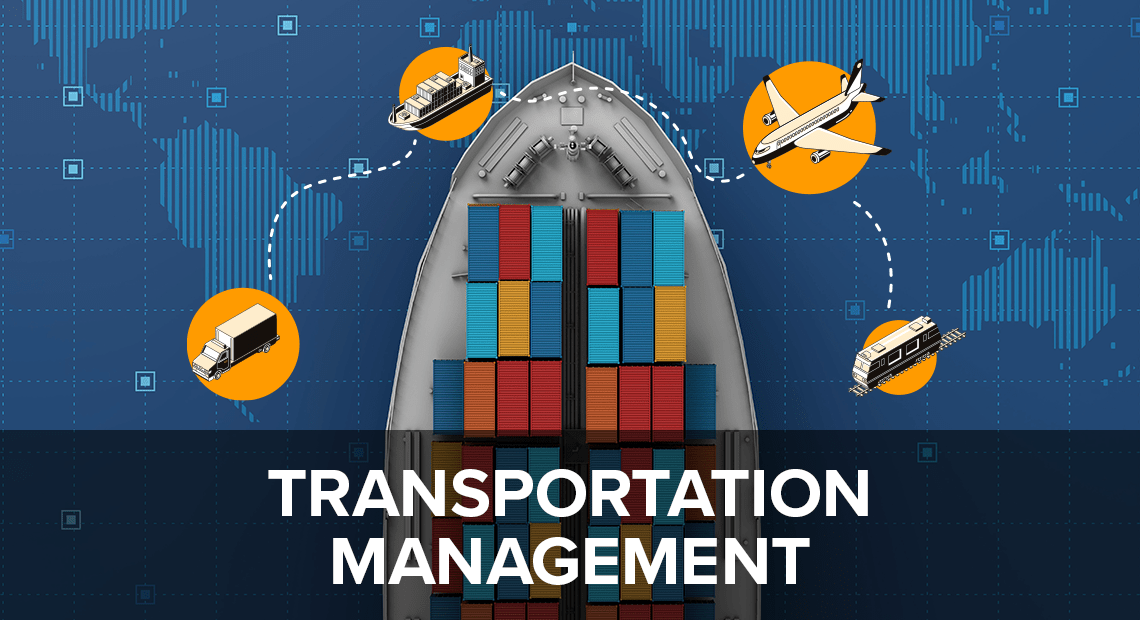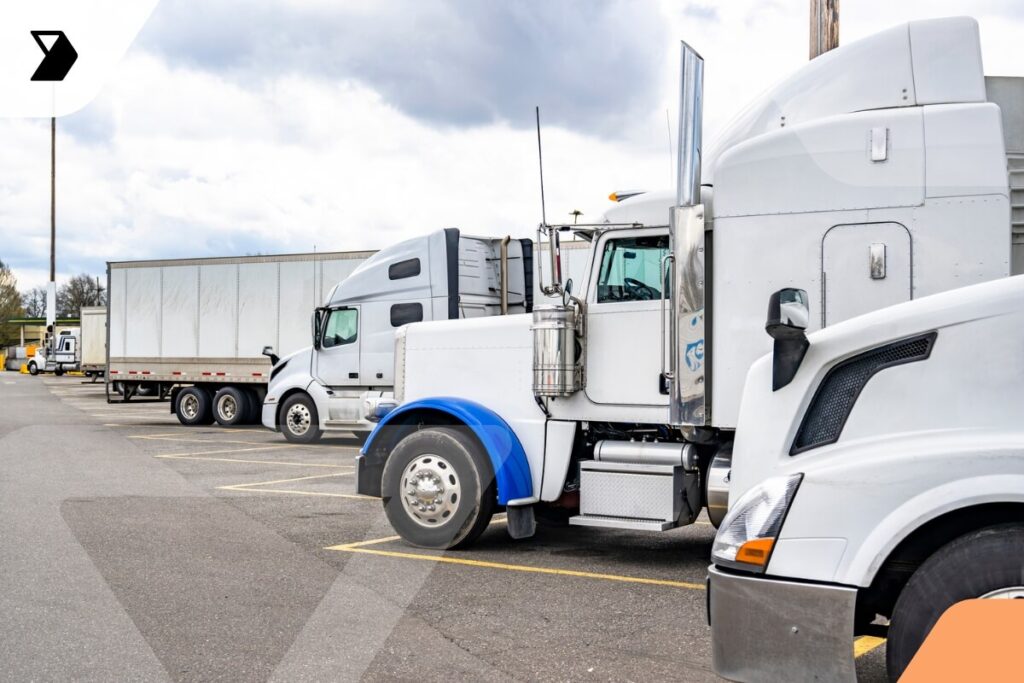Why Is LTL Freight Slow? Contributing Factors
Today, I'm going to take a deep dive in to LTL—or less than truckload—freight.
Ready to transform your supply chain?

I’ll examine what exactly LTL freight is and why it’s important. Then I’ll discuss whether or not the perception that LTL freight is slowing down is accurate.

Realistically, the answer to this question is that it varies year to year. Later on in this post, I’ll take a closer look at the trends over the past three years.
What Is LTL Freight?
First and foremost, you need to understand what LTL freight is. LTL freight, as I mentioned above, refers to less than truckload freight. This means shipments of cargo that do not require a full truck load. Instead, transporters will piece together multiple shipments of LTL freight to create one load. LTL shipments usually consist of less than 10,000 pounds’ worth of product.
LTL freight is such an important part of the industry for so many players on all sides, so it behooves us to understand the recent and upcoming trends. There can be a volatility to the stability of LTL freight availability and rates. I’ll break those factors down in more detail as we go.
Benefits of LTL Freight
There are a number of benefits to shipping LTL freight. Here are some of them:
- Efficiency for carriers: LTL freight is more efficient for many carriers. Rather than shipping half-empty trucks, carriers can piece together multi-pick and multi-drop loads to optimize their trip.
- Cost for shippers: Shippers only have to pay for the actual space they’re using on a truck. By shipping LTL freight with LTL carriers, shippers can pay a partial load rate to ship their goods. Compared with paying for an entire truck for less freight, the savings are significant. This can be especially important for smaller companies that seldom have enough goods to ship to fill an entire truck.
- Environmental health: The simple fact is that the fewer trucks that are on the road at a given time, the fewer emissions pollute the air. Rather than shipping each smaller shipment individually on several trucks, LTL load building means fewer trucks are on the road, and those that are on the road are running at a fuller capacity.
Challenges of LTL Freight
Those are just a few of the tremendous benefits of LTL freight loads. However, there are some challenges that come along with LTL freight as well.
- Turnaround time: Pick-up and delivery times for LTL freight often result in a longer turnaround time than for FTL, or full truckload, freight. The reason for this is that numerous pick-up and drop-off locations are a trade-off of LTL loads. Naturally, this requires more time to account for travel to various locations. Moreover, you need to account for the coordination of scheduled times for those pick-ups and deliveries to be able to accommodate all stops.
- Organization: You need to be significantly more organized in order to use LTL freight effectively. Every detail matters. For example, the weight of each LTL shipment must be accounted for. In addition, you must account for the space in the truck. You also need to factor in where the specific stops of each shipment are located. You’ll need to make sure they follow a route that makes sense for your driver and is profitable for your company.
- Carrier availability: Lastly, not all carriers offer an LTL service. As a shipper, this can narrow the pool of available carriers to move your shipments for you.
Is LTL Freight in Recession?
Where does LTL freight lie in 2020? In 2018, LTL freight enjoyed a significant boon that resulted in its largest growth year since 2000. A major reason for this growth was because of the recent trade war between the United States and China. A threat of 25% tariffs on Chinese imports led to a massive spike of inventory on American grounds. With the increased inventory for both shippers and manufacturers, this led to many more opportunities for LTL freight to be moved.
The overall economic growth of the United States was up across 2018. In turn, consumer sales and spending were also up. LTL freight naturally benefited greatly from these increases.
There was a fear that, because of the unnatural spike in growth in 2018, that 2019 may have regressed all the way to a recession. Between the temporary government shutdown of 2019 and generally slower economic growth, the LTL industry was anticipated to be impacted.
Technically, this was correct. However, the fear that LTL freight might recede or, at the very least, flatten was largely unfounded. Instead, 2019 continued to see growth, just at a much slower rate than in the boon of 2018.
In 2020, the industry was expected to leave some of the uncertainty and unrest of 2019 behind. However, that has changed in the most recent months. Let’s examine more closely.
Why Has LTL Freight Slowed Down?
I’d first like to take a look at why 2019 saw a decrease in the rate of growth.
Slower Growth in 2019
We’ve mentioned how 2018 saw a massive spike in inventory. The economic growth of 2018 that accompanied this led to more inventory than there was capacity. As such, freight kept moving rapidly.
However, 2019 saw an overall decrease in economic growth and consumer spending. In turn, there was still an excess of inventory. However, as there was less overall demand for product, there was much less capacity to go around to move the freight. LTL carriers have also had difficulty retaining qualified CDL drivers. Many drivers prefer the simplicity of a one-pick, one-drop FTL load.
Carriers also did not feel compelled to lower their rates for 2019 from what they were able to charge in 2018. They did not want to decrease their profit share in order to maintain volume.
However, LTL freight saw a significant growth in regional freight. Defining regional as any load under 300 miles, LTL freight has grown three times as fast as long-haul cargo over the past 15 years. A stronger focus on this aspect of the industry and rating accordingly for retail loads helped maintain a growth curve, even if it was slower than in 2018.
LTL Growth in 2020
Expectations for 2020 were to have a much less volatile year. Rates had spiked in December to higher than any other point of 2019. The economy was performing well, both internationally and domestically, with consumer sales. The trade wars had remained relatively stable. As such, LTL freight was expected to grow at a much more consistent and higher rate than in 2018.
But everything has changed due to the COVID-19 pandemic ravaging the marketplace. While trucking services of nearly all kinds are essential services, the pandemic has cratered the economy. While demand for certain types of cargo remain high, the workforce is seeing an obvious and general decrease.
How this situation will ultimately impact the remainder of 2020 is unknown. The state of the economy and the demand for goods is, at this point, nearly impossible to predict. Furthermore, no one is sure when the social and workforce restrictions will end and most of the nation will return to work. That said, the truth of the matter is that the market will certainly suffer long term. Recovering losses and returning to the normal rate of growth within the calendar year is, at best, unlikely.
What Can You Do to Withstand a Slow Economy?
Given all of these factors, you may wonder what can possibly be done to help your business persevere. With staffing becoming one of the primary concerns, digitization and automation once again feature prominently in sensible solutions. You can invest in your workforce. Train the employees you have for a wider variety of skills and abilities.
Further yet, automate as much of your business as you can. At a time when wages and staffing are more challenging the ever, the more work that can be done digitally, the more money you can save your business. Customize your workflows and truck routing through digital means.
Third-party technology for load-building digitally through apps has not dramatically developed for LTL freight. Challenges exist in dealing with multiple clients and multiple locations. However, you can embrace this opening. Find a quality partner to help develop technology for digital load-building. On a smaller, company-by-company basis, this is much more feasible.
What It All Means
I’ve discussed how important and valuable LTL load-building can be. The industry has, as a whole, actually been very strong over the past five years. However, it is true that the growth curve had slowed dramatically from 2018 to 2019. 2020 stood to be a much stronger, more consistent year until the emergence of COVID-19.
The stability and growth rate of the economy will be paramount to restoring the growth rate of LTL freight. However, you can help do your part by being proactive. You can start with more complete and diverse training of the staff you have. Next, you can implement as much automation and digitization in your business as possible.
Emerging from this difficult economic time will take everyone working together. The smarter we work and the more proactive we are, the more we can help combat the challenges facing the LTL industry.
This post was written by Matthew Zandstra. Matt has been working in transportation and logistics dispatch for the past six years, both as a broker and direct to drivers. He’s familiar with various facets of relationships, technical systems, pricing mechanics, and commodities.
Continue reading
Ready to transform your supply chain?
Increase efficiency and productivity. Say goodbye to delays, handwriting errors, and time-intensive manual data entry.



